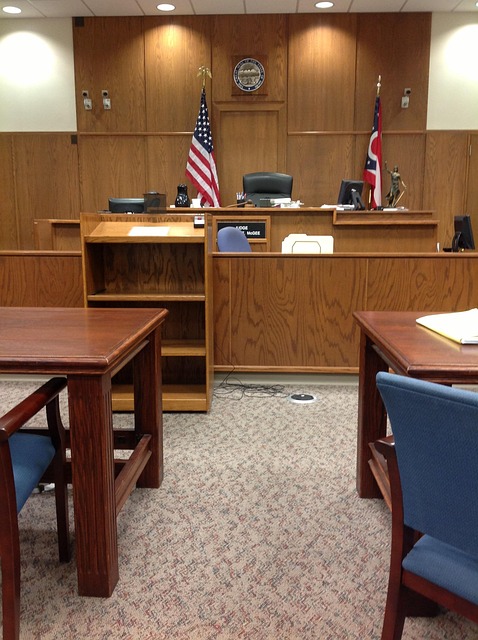Securities class actions target corporate misconduct, including trademark infringement, with severe legal repercussions. These cases involve investor groups suing for fraudulent activities, aiming to compensate victims and deter future infringers. Trademark infringement can lead to brand reputation damage, substantial financial damages, and court orders. The legal consequences disrupt market integrity, emphasizing the need for robust white-collar defense strategies. Successful class actions set precedents, affecting industries and public trust with remedies from monetary compensation to governance changes.
“Uncover the intricate world of securities class actions, where investors unite to challenge corporate misconduct. This comprehensive guide explores the legal framework governing these powerful tools for justice. From trademark collisions to their impact on businesses, we delve into the consequences of infringement. Learn how remedies and damage awards play a pivotal role in holding wrongdoers accountable, ensuring fair practices in the financial sphere. Discover the legal intricacies and practical implications of securities class actions, especially regarding the severe Legal Consequences of Trademark Infringement.”
- Understanding Securities Class Actions: A Legal Framework
- When Trademarks Collide: Infringement Scenarios
- The Impact on Businesses: Legal Consequences Unfolded
- Navigating Remedies and Damage Awards in Class Actions
Understanding Securities Class Actions: A Legal Framework
Securities Class Actions involve a group of investors suing a company or its officers for misconduct related to securities laws violations. This legal framework is designed to protect investors and ensure corporate accountability, allowing them to recover damages sustained due to fraudulent or misleading activities. The process begins with an investigation, where evidence is gathered at all stages, from initial allegations to formal enforcement. This thorough approach ensures the Legal Consequences of Trademark Infringement are accurately assessed and addressed.
White collar defense and understanding white collar and economic crimes are pivotal in these cases. The investigative and enforcement process involves meticulous steps to uncover fraud, manipulate financial markets, or violate securities regulations. It’s a complex tapestry where each thread—from evidence collection to legal strategy—plays a role in determining the fate of the case. Ultimately, this framework aims to rectify wrongs, compensate victims, and send a stark message that such transgressions will not be tolerated.
When Trademarks Collide: Infringement Scenarios
When trademarks collide, it can result in legal battles that have significant implications for businesses and consumers alike. Trademark infringement occurs when a party uses a mark identical or confusingly similar to one already registered, causing potential harm to the original owner’s brand reputation and market position. This is a serious issue, especially in today’s competitive business landscape, where companies strive to establish and protect their unique identities.
High-stakes cases often arise from infringement scenarios, particularly when the trademarks involved are well-known and widely recognized. The legal consequences can be far-reaching, leading to substantial financial damages, court-ordered cease and desist actions, and even an unprecedented track record of successful brand protection efforts within the philanthropic and political communities. Such cases not only set important precedents but also serve as powerful deterrents for potential infringers, ensuring that intellectual property rights are respected and upheld.
The Impact on Businesses: Legal Consequences Unfolded
When businesses face securities class action lawsuits, the legal consequences can be profound. These high-stakes cases often revolve around allegations of fraud, misstatement, or violations of regulatory requirements, such as those concerning trademark infringement. The impact on a company’s reputation and financial stability can be severe, with damages extending far beyond the immediate legal costs.
The consequences of losing such cases are significant, requiring robust white collar defense strategies to protect not only the business but also its stakeholders. Legal repercussions may include substantial monetary fines, asset seizures, and even criminal charges for individuals involved. As these cases often attract widespread media attention, they can create a public relations nightmare, damaging the company’s image and eroding customer trust, which are invaluable assets in today’s competitive markets.
Navigating Remedies and Damage Awards in Class Actions
Navigating Remedies and Damage Awards in Class Actions presents a complex legal landscape. When individuals or corporate clients bring forward securities class action lawsuits, they seek to rectify significant wrongs, often involving substantial financial losses. The remedies available can vary widely, from monetary compensation for injured parties to injunctive relief aimed at preventing future violations. In cases of trademark infringement, for instance, damage awards can be especially consequential, reflecting not only economic harm but also the legal consequences of disrupting market integrity.
Successful class actions often result in unprecedented track records in terms of both financial settlements and changes to corporate governance. This is particularly true in cases involving white collar and economic crimes, where the impact extends beyond individual clients to affect entire industries and public trust. The process demands meticulous legal strategies, ensuring that remedies are tailored not only to compensate victims but also to deter similar misconduct in the future.
Securities class actions, encompassing understanding legal frameworks, addressing trademark infringement scenarios, and navigating their impact, offer a powerful tool for justice. By exploring remedies and damage awards, businesses can anticipate and mitigate the legal consequences of trademark infringements. Awareness and proactive strategies are key to safeguarding intellectual property rights in today’s complex legal landscape.






